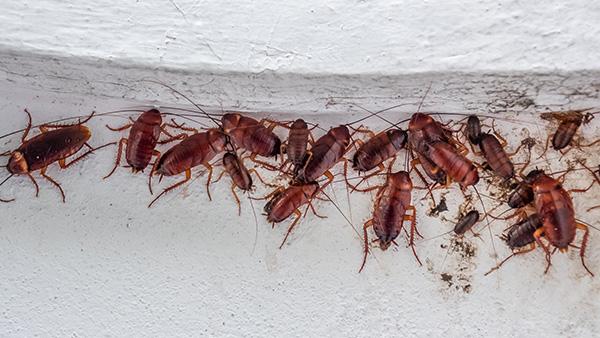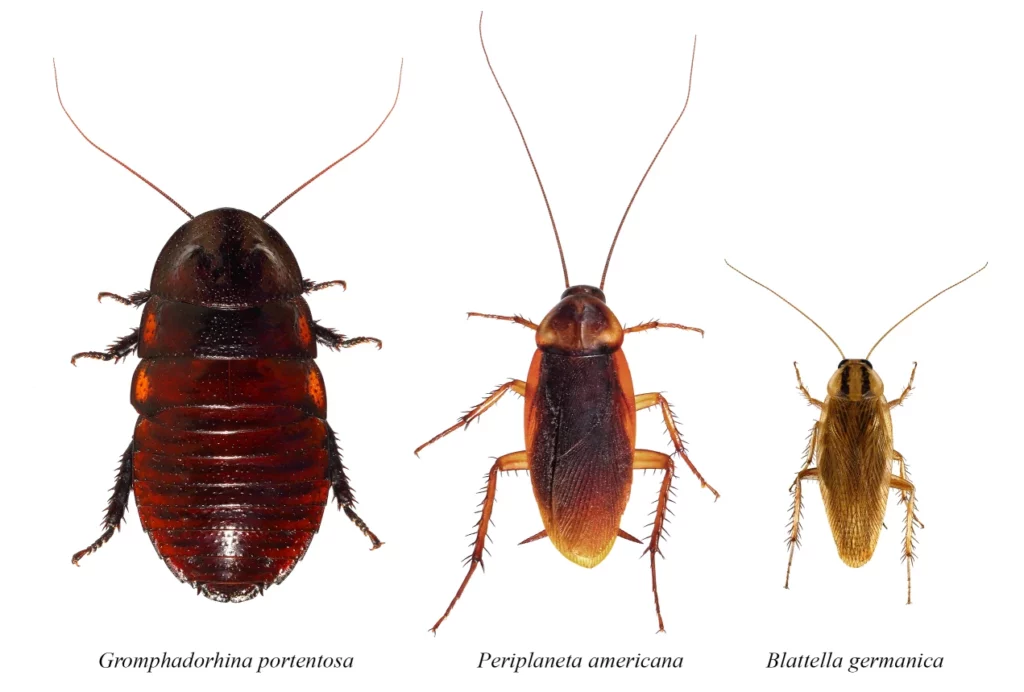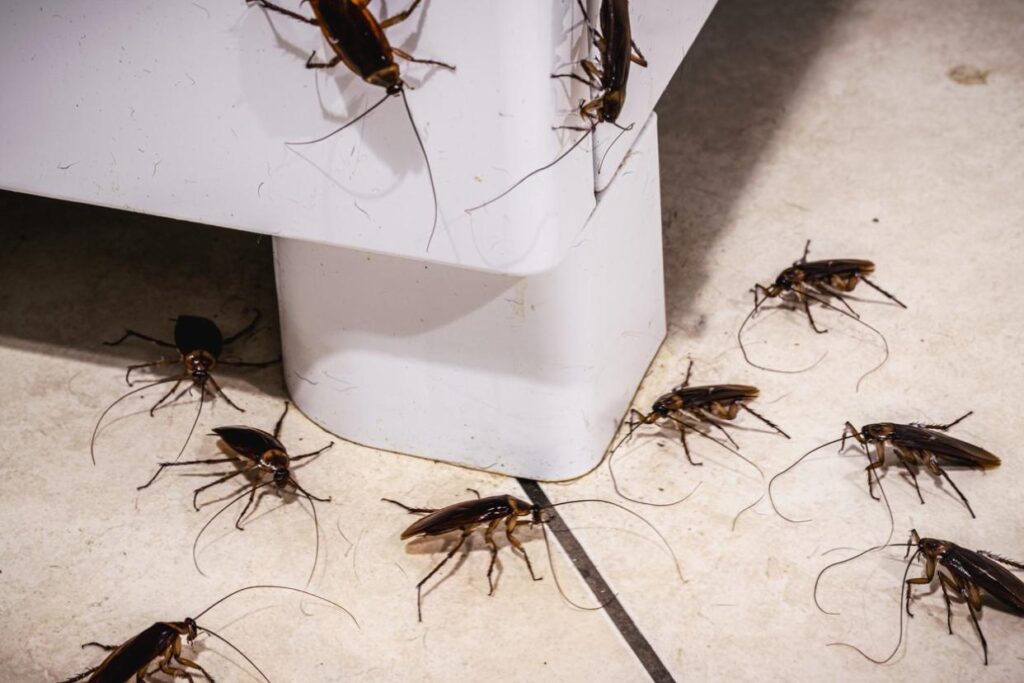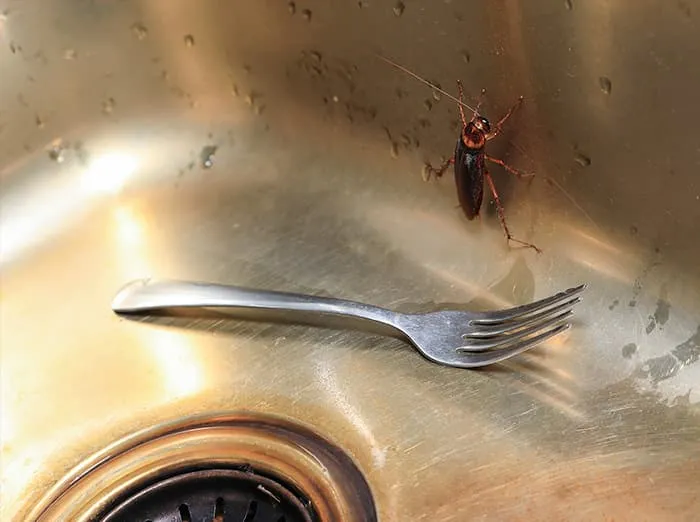Cockroach Removal Services by Pest Control Xperts in Claremont
Serving homes, apartments, dormitories, hotels, and healthcare offices throughout Claremont, California, and Surrounding Areas
Professional Cockroach Control & Extermination in Claremont, Upland, and La Verne, California
Are you battling a relentless cockroach problem in your Claremont home or business? You’ve tried every spray, trap, and home remedy, yet those resilient pests keep reappearing, scurrying across your kitchen floor or lurking in dark corners. This isn’t just an annoyance; it’s a clear sign of a deeper, hidden infestation. DIY methods offer only temporary relief, creating an illusion of control that is quickly undone by the unseen colony thriving within your walls. At Claremont Pest Control Xperts, we understand your frustration, and we’re here to provide the definitive, lasting solution. We don’t just eliminate the visible cockroaches; we target the source, ensuring complete colony destruction, including the queen and nest.
Why Cockroaches Appear in Claremont and Surrounding Communities
Claremont, Upland, La Verne, San Dimas, and Montclair, nestled at the base of the San Gabriel Mountains, present a unique environment that unfortunately makes them prime locations for cockroach activity. Our region experiences hot, dry summers and mild, wet winters. These climatic shifts drive cockroaches indoors seeking stable temperatures, moisture, and food sources. The proximity to natural canyons and the San Gabriel River also contributes to elevated moisture levels, creating ideal breeding grounds for various species, especially those attracted to damp conditions like carpenter cockroaches.
Architecturally, our communities feature a diverse mix, from historic homes with older foundations and wooden structures to dense commercial districts with shared walls and new suburban developments. Older homes often have more entry points due to settling foundations, cracks, and aging plumbing, offering easy access for pests. Commercial areas, particularly restaurants and food service establishments, provide abundant food and shelter. Even newer constructions can have vulnerabilities, such as gaps around utility lines or unsealed expansion joints, that allow cockroaches to infiltrate. Neighboring properties, whether residential or commercial, can also contribute to ongoing infestations, as cockroaches readily travel between structures in search of resources.
Types of Cockroaches Commonly Found in Southern California
Understanding the specific type of cockroach invading your property is crucial for effective removal. Here are some of the most common species we encounter in Claremont and the wider Southern California region:
American Cockroaches (Periplaneta americana)
- Identification: Large, reddish-brown, with a yellowish figure-eight pattern on the back of their head. They can grow up to 2 inches long.
- Behavior: Prefer warm, damp, dark areas like basements, sewers, drains, and crawl spaces. They are strong flyers and often enter homes through drains, pipes, or gaps under doors.
- Risks: Can spread bacteria, contaminate food, and trigger allergies or asthma. Their presence often indicates unsanitary conditions.
German Cockroaches (Blattella germanica)
- Identification: Smaller, light brown to tan, with two dark parallel stripes running from their head to the base of their wings. About 1/2 to 5/8 inch long.
- Behavior: The most common indoor cockroach, they thrive in kitchens and bathrooms, preferring warm, humid environments close to food and water sources. They reproduce rapidly.
- Risks: Highly prolific, leading to severe infestations quickly. They contaminate food, spread pathogens, and are a major allergen source.
Oriental Cockroaches (Blatta orientalis)
- Identification: Dark brown to black, shiny, and about 1 inch long. Females have very short, underdeveloped wings, while males have wings that cover about three-quarters of their body.
- Behavior: Often called “water bugs” due to their preference for cool, damp, dark places like basements, sewers, drains, and utility tunnels. They are less agile than other species and cannot fly.
- Risks: Emit a strong, musty odor. They feed on decaying organic matter and can transmit bacteria, posing health risks.
Brown-Banded Cockroaches (Supella longipalpa)
- Identification: Small, about 1/2 inch long, light brown with two lighter bands across their wings. Males can fly, females have shorter, broader wings.
- Behavior: Unlike German cockroaches, they prefer warmer, drier, higher locations, often found in bedrooms, living rooms, and high on walls or ceilings. They are less dependent on water.
- Risks: Can spread bacteria and contaminate food, though less commonly associated with food preparation areas. Their presence can be a sign of a widespread infestation throughout a property.
Carpenter Cockroaches
- Identification: While not a true species, this term often refers to larger cockroaches that may be found in wood, such as certain species of wood cockroaches. They can be dark brown to black and vary in size.
- Behavior: Attracted to decaying or damp wood, they can be confused with carpenter ants. They do not eat wood but tunnel through it to create nests.
- Risks: Can cause structural damage to wooden elements of a home, similar to termites, if their presence goes unchecked.
Problems Cockroaches Create for Homes and Businesses
An unchecked cockroach infestation is more than just an unsightly nuisance; it poses significant threats to your property, health, and peace of mind. For homeowners in Claremont, Upland, and La Verne, the daily frustration of seeing these pests can be immense, but the dangers extend far beyond mere annoyance.
- Food Contamination: Cockroaches are notorious for crawling over food preparation surfaces, utensils, and stored food. They carry bacteria, viruses, and parasites on their bodies and in their feces, directly contaminating anything they touch. This can lead to serious health issues, including salmonella, E. coli, and staphylococcus infections.
- Property Damage: While not as destructive as termites, certain cockroach species, like carpenter cockroaches, can tunnel through damp or decaying wood, compromising structural integrity over time. Beyond structural issues, they can damage books, fabrics, electrical wiring, and other household items by chewing on them or leaving behind their droppings.
- Allergies and Asthma: Cockroach droppings, saliva, and shed skin contain allergens that can trigger asthma attacks, especially in children, and exacerbate allergy symptoms in sensitive individuals. The presence of a significant cockroach population can severely impact indoor air quality.
- Unpleasant Odors: Large infestations often produce a distinct, musty odor that permeates the air and can cling to food, clothing, and other items. This smell is a clear indicator of a severe problem and can make a home feel unsanitary and unwelcoming.
- Reputation Risk for Businesses: For businesses in Claremont, Upland, and San Dimas, particularly those in the food service, hospitality, or healthcare industries, a cockroach infestation can be catastrophic. It can lead to health code violations, negative reviews, loss of customers, and severe damage to brand reputation, which can be incredibly difficult to recover from.
- Daily Frustration and Stress: Living or working amidst a cockroach infestation is inherently stressful. The constant vigilance, the fear of discovery by guests or clients, and the feeling of helplessness as DIY efforts fail can take a significant toll on mental well-being.
Signs of an Escalating Cockroach Infestation
Early detection is key to preventing a minor cockroach problem from becoming a full-blown crisis. If you notice any of these signs in your Claremont, Upland, or La Verne property, it’s time to seek professional help:
- Consistent Cockroach Trails: Seeing cockroaches regularly, especially during the day, is a strong indicator of a large and established colony. Cockroaches are primarily nocturnal, so daytime sightings mean their hiding spots are overcrowded.
- Droppings (Frass): Small, black or dark brown droppings resembling coffee grounds or black pepper are common. Larger droppings, often cylindrical, indicate larger species. These are frequently found in cabinets, drawers, under sinks, and along baseboards.
- Egg Casings (Oothecae): Cockroaches lay their eggs in protective casings called oothecae. These small, capsule-shaped objects can be found in secluded areas, behind furniture, or in cracks and crevices. Finding them signifies active breeding.
- Musty Odor: A distinct, oily, or musty smell, particularly in damp areas like kitchens or bathrooms, is often associated with a large cockroach infestation. This odor becomes more pronounced as the population grows.
- Chew Marks and Damage: While less common than with rodents, cockroaches can gnaw on food packaging, paper, books, and even fabric. Unexplained damage to these items could be a sign of their presence.
- Live Cockroaches: The most obvious sign is seeing live cockroaches. If you flip on a light in the middle of the night and see them scatter, you have an active infestation.
- Shed Skins: As cockroaches grow, they shed their exoskeletons. Finding these translucent, empty shells in hidden areas is another indicator of an active and growing population.
- Winged Cockroaches Indoors: While some species fly, finding winged cockroaches inside, especially larger ones like American cockroaches, suggests they are seeking new harborage or food sources, often due to overcrowding.
Why Professional Extermination is Essential for Cockroach Removal
Many property owners in Claremont, Upland, and La Verne attempt to tackle cockroach problems themselves, often with disappointing results. The truth is, store-bought sprays, traps, and DIY remedies are temporary illusions undone by the hidden colony. These methods typically only target the visible foragers, the few cockroaches you see scurrying across your floor. They fail to address the root of the problem: the vast, unseen population, including the queen and her nest, that continues to reproduce and thrive deep within your property’s structure.
When you spray a few cockroaches, you might feel a temporary sense of victory. However, this often leads to a phenomenon called “budding,” where the colony, sensing a threat, splits into smaller, satellite colonies, spreading the infestation to new areas of your home or business. These smaller groups become even harder to track and eliminate, turning a localized problem into a widespread nightmare. Store-bought products lack the potency and targeted application necessary to penetrate deep into harborage areas where cockroaches hide and breed. They don’t contain the advanced active ingredients or delivery systems required for complete colony destruction.
Professional service, on the other hand, is the only way to achieve true, lasting cockroach removal. Claremont Pest Control Xperts employs a comprehensive strategy designed to eliminate the entire colony, not just the visible individuals. We understand the biology and behavior of different cockroach species, allowing us to identify their hiding spots, breeding grounds, and entry points. Our professional treatments utilize specialized products and techniques that penetrate deep into cracks, crevices, and wall voids, reaching the queen and her nest. This targeted approach ensures that the reproductive cycle is broken, preventing future generations from emerging. We don’t offer temporary fixes; we provide complete colony elimination, restoring peace of mind to your Claremont, Upland, or La Verne property.
Our Cockroach Removal Method
At Claremont Pest Control Xperts, we follow a meticulous, multi-step process to ensure thorough and lasting cockroach removal for your home or business:
1. Comprehensive Consultation & Inspection
- Our process begins with a detailed discussion of your cockroach concerns and observations.
- We then conduct a thorough inspection of your property, both interior and exterior, to identify the species of cockroach, locate harborage areas, determine the extent of the infestation, and pinpoint potential entry points and contributing factors.
- This initial assessment is crucial for developing a customized treatment plan.
2. Customized Treatment Plan
- Based on our inspection findings, we develop a tailored treatment strategy using a combination of advanced techniques.
- This may include targeted baiting systems, insect growth regulators, and residual treatments applied to cracks, crevices, and other hidden areas where cockroaches hide and breed.
- Our methods prioritize effectiveness while considering the safety of your family, pets, and employees.
3. Exclusion & Maintenance Recommendations
- Beyond treatment, we provide expert recommendations for exclusion techniques to prevent future infestations.
- This includes advice on sealing cracks and gaps, improving sanitation practices, addressing moisture issues, and making structural repairs that deter cockroaches.
- We empower you with the knowledge to maintain a cockroach-free environment.
4. Ongoing Monitoring & Follow-Up
- Cockroach control is an ongoing process. We schedule follow-up visits to monitor the effectiveness of our treatment and make any necessary adjustments.
- Our team ensures that the colony has been completely eradicated and provides continued protection against re-infestation, giving you lasting peace of mind.
Why Claremont Relies on Claremont Pest Control Xperts
When it comes to cockroach control in Claremont, Upland, La Verne, San Dimas, and Montclair, Claremont Pest Control Xperts stands apart. Our deep regional familiarity means we understand the specific challenges and environmental factors that contribute to cockroach problems in our local communities. We don’t just treat symptoms; our unwavering focus is on complete colony destruction, ensuring that the queen and nest are eliminated for a truly lasting solution. We utilize advanced, responsible application methods, prioritizing the safety of your property and its inhabitants. Our commitment extends beyond the initial treatment, with dedicated follow-up to ensure your peace of mind and a cockroach-free environment.
Concluding Call to Action
Don’t let the frustration of a persistent cockroach infestation continue to disrupt your life in Claremont, Upland, or La Verne. The temporary illusions of DIY solutions will always be undone by the hidden colony. It’s time to choose the definitive path to peace of mind and a truly cockroach-free property. Contact us for an immediate consultation and let Claremont Pest Control Xperts provide the expert, lasting solution you deserve.
Service Area Reminder
Claremont Pest Control Xperts proudly serves Claremont, Upland, La Verne, San Dimas, and Montclair, California, including zip codes: 91711 (Claremont), 91786 (Upland), 91785 (Upland), 91750 (La Verne), 91773 (San Dimas), 91763 (Montclair).
Related Topics
Understanding Cockroach Behavior
The Nocturnal Habits of Cockroaches
Cockroaches are primarily nocturnal creatures, meaning they are most active during the night. This behavior is a key reason why infestations can go unnoticed for extended periods, as they hide in cracks and crevices during the day. Understanding their preference for darkness helps in identifying potential harborage areas and applying treatments effectively.
Factors Attracting Cockroaches to Your Home
Several factors draw cockroaches into homes and businesses. These include readily available food sources, such as crumbs, spills, and uncovered garbage; moisture, often found in leaky pipes, damp basements, or humid bathrooms; and shelter, including cluttered areas, cardboard boxes, and dark, undisturbed spaces. Eliminating these attractants is crucial for long-term control.
Preventative Measures for Cockroach Control
Effective Sanitation Practices
Maintaining a high level of cleanliness is paramount in preventing cockroach infestations. This involves regularly cleaning up food spills, storing food in airtight containers, taking out garbage frequently, and keeping kitchen and bathroom areas dry and free of clutter. These practices remove essential resources that cockroaches need to survive.
Sealing Entry Points and Cracks
Cockroaches can enter properties through incredibly small openings. Sealing cracks and crevices in foundations, walls, and around utility pipes is a critical preventative measure. Installing door sweeps, repairing damaged screens, and ensuring proper ventilation can also significantly reduce entry opportunities, especially in areas like Upland and San Dimas.
Health Risks Associated with Cockroaches
Cockroaches and Asthma Triggers
The allergens present in cockroach droppings, saliva, and shed skin are potent triggers for asthma attacks, particularly in children. Exposure to these allergens can lead to chronic respiratory issues and worsen existing asthma conditions. Professional removal significantly reduces these health risks.
Bacterial and Viral Transmission
Cockroaches are known carriers of various bacteria and viruses, including Salmonella, E. coli, and poliomyelitis. As they move from unsanitary areas to food preparation surfaces, they can easily transmit these pathogens, leading to food poisoning and other illnesses. Protecting your family or customers from these risks is a top priority for Claremont Pest Control Xperts.
Advanced Cockroach Treatment Technologies
The Role of Insect Growth Regulators (IGRs)
Insect Growth Regulators (IGRs) are a modern approach to cockroach control. These substances disrupt the cockroach life cycle, preventing nymphs from maturing into reproductive adults. IGRs are highly effective in breaking the breeding cycle and achieving long-term population control, particularly useful in dense areas like Montclair.
Baiting Systems vs. Traditional Sprays
Modern baiting systems offer a highly effective and targeted solution for cockroach infestations, especially when compared to traditional sprays. Baits are consumed by cockroaches and carried back to the nest, eliminating the entire colony, including the queen. This method is safer and more efficient than sprays, which often only kill visible pests and can lead to budding.
Seasonal Cockroach Activity in Southern California
Summer and Fall Infestation Peaks
In Southern California, cockroach activity often peaks during the warmer summer and early fall months. The increased temperatures and occasional humidity drive cockroaches indoors in search of cooler, more stable environments and moisture. This is a critical time for preventative measures and professional intervention in Claremont and surrounding areas.
Winter Cockroach Behavior and Overwintering
During the milder winter months, cockroaches may become less active but do not disappear. They often seek shelter in warm, protected areas within homes and businesses to overwinter. This period can still see significant indoor activity, especially if food and water sources are readily available, making year-round control essential.
Contact Claremont Pest Control Xperts
Schedule Your Cockroach Inspection Today
If you’re experiencing a cockroach problem in Claremont, Upland, La Verne, San Dimas, or Montclair, don’t wait for the infestation to escalate. Our expert team is ready to provide a thorough inspection and develop a customized treatment plan to eliminate these pests from your property. We are dedicated to providing effective, lasting solutions.
Get Professional Advice on Cockroach Prevention
Beyond active extermination, we offer valuable insights and recommendations on how to prevent future cockroach infestations. Our specialists can guide you on best practices for sanitation, exclusion, and environmental modifications that deter cockroaches, ensuring your property remains pest-free. Contact us for an immediate consultation.





